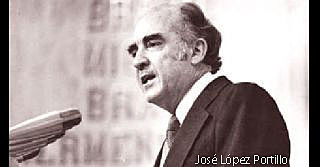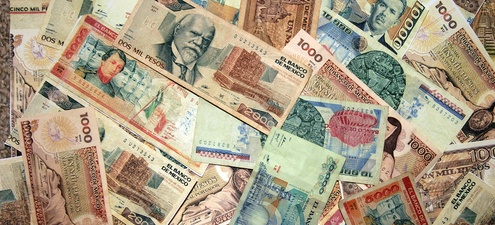Mexico's Past, the World's Future Currency Devaluations
GoldSilver.com / Guillermo Barba
OCT 18, 2012

It seems the world is doomed to repeat the same mistakes, from wars to large economic shocks that could have been avoided. All this, without a doubt, is the responsibility of leaders, who are often blinded by today's apparent prosperity, or by the desire to postpone the inevitable, leading entire nations to what will eventually end in tragedy.
The influential forces that these leaders possess, including political, economic, monetary, and even military, impede for actions to be taken against them, allowing them to act discreetly and individually.
Of course, this does not imply we should rise in opposition to faulty government and monetary policies. On the contrary, bear in mind that rulers often hide or suppress movements and initiatives for change until they prove unstoppable. By then it is too late for any preventive action and panic ensues.
In this sense, Mexico has been no exception experiencing several such episodes in its recent history. Mexico's experiences from the past can serve as a model for other nations as an example of what to avoid.
It's 2012, and Mexico is nearly thirty years past its period of devaluations, yet it is once again on a path toward recurring crises, which have coincided almost exactly with its changes in government every six years.
The famous crisis of 1982 was the unwinding of a global process, not only relevant to Mexico but to the world, as the first consequences of the break from the gold standard (Bretton Woods in 1971) became evident.

Mexican President at the time, Luis Echeverria (1970-1976), did something that is all too common today. He raised the fiscal deficit and financed it with freshly printed currency (pesos), very much in the style of today's Federal Reserve. Mexico was unable to adapt to the realities of the newly created fiat currency system, and quickly abused it, hoping to create new wealth with little or no effort.
Inflationary consequences took hold of the economy, which combined with a fixed exchange rate and low business competitiveness, increased imports and the trade imbalance.
A political decision was made to avoid a devaluation of the peso at all costs, this further closed the economy with additional tariffs, while the trade deficit was financed with more debt. That is, they dug an even deeper hole than the one Mexico was already in.
In 1976 the bomb went off and Mexico was forced to devalue the peso. The exchange rate jumped from 12.50 to 20.50 pesos per US dollar overnight (a sudden 64% currency devaluation).
The president who followed Echeverría, José López Portillo (1976-1982), used the "boom" in oil prices at the time to justify spending in oil-related projects, using the country's newfound oil wealth to request additional borrowing from other countries. Debt levels more than doubled during this period ($20 to $50 billion). These times were marked by an artificial boom, yet the economy remained highly constrained.
During this period the United States struggled to contain its own inflation. Affected by peaking oil prices, the United States rose interest rates, increasing Mexico's debt payments which quickly became unserviceable. Lastly, oil's bull market cycle was concluding, soon to be followed by a long collapse in prices rapdily destroying Mexico's previously perceived wealth.
The magnitude of the devaluation during this period was severe, moving from an exchange rate of 21.25 pesos to the US dollar in 1977 when Lopez Portillo took office, to 149.25 pesos per US dollar in 1982 (approxomately a 600% currency devalutaion). This was a crushing loss of value for the Mexican peso, crippling the purchasing power of the majority Mexico's population.
Few managed to protect their wealth during these crises, typically only those who enjoyed privileged information from senior government officials anticipated the currency devaluations.

Worthless Devaluated Mexican Pesos
Today we live in a new age of information, thus the crises ahead will be different. These advances in communication and technology will be instrumental in educating and positioning the public on the correct side of this coming wealth transfer. The upcoming crisis will be global and its magnitude will surpass anything seen in history, impacting a global monetary system.
The era marked by excessive spending, consumption, and debt is coming to an end. The basic and elemental will defeat the "sophisticated" and "modern". The United States, Europe, and Japan will be forced to understand that more deficits, bailouts, and currency printing ( QE or Quantitative Easing ) will only aggravate and extend the problem.
Looking at history however, we must understand that their policies will not change and we must take individual and discreet measures to protect ourselves and our loved ones. To put it in a clearer way, you need to seek financial protection in real assets such as gold and silver, which have demonstrated time after time that they are not a "barbaric relic", but true money, offering the only time proven store of value.

